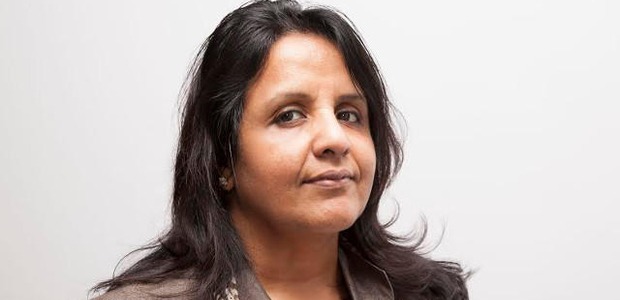advertisement
Tecnotree: 2016 key industry trends
The last year has seen an increasing need for operators to adopt new methods, learn from their customers in the…

The last year has seen an increasing need for operators to adopt new methods, learn from their customers in the market and provide an excellent customer experience globally.
With demand from operators to provide customer centric care continuing to rise, this year will see CSPs face several fresh challenges. Padma Ravichander EVP, MEA/APAC of Tecnotree provides insight into how CSPs can seek to remain competitive and profitable in the midst of new technological and commercial developments:
Big data disillusionment
advertisement
The big data technology and services market is predicted to grow to $41.5 billion by 2018 and has the potential to place CSPs in a prime position to win the battle for customers and create new revenue streams. However despite a lot of hype over the past five years, and serious investment by many CSPs, the advertised benefits of big data have by and large failed to materialise, leading to disappointment for everyone. This may be partly due to the fact that the data held by CSPs is not that great after all, and partly because the success of ‘traditional’ big data approaches (by Google et al) assume some level of serendipitous discovery. The CSPs, on the other hand, are looking more for answers to more specific questions, where a different approach may be called for.
In 2016, this will lead to many CSPs returning to more grounded approaches to analytics and we will see much more talk about “small data” or “smart data”. In practice, this means analysing the behaviour of individual customers using almost-real-time event data and using generalisations to moderate the findings against trends, as opposed to trying to predict (or influence) individual behaviours from generalisations of the entire population.
IoT hype reaches peak intensity
advertisement
At a time when the IoT (or IoE) hype in general still keeps rising, the relative lack of concrete success stories in the CSP environment will also require a re-adjustment of approach. While industrial players are concentrating on making their respective end-to-end ecosystems viable, especially from the point of view of smooth deployments, CSPs with a few exceptions have been relegated to the role of providing access to a marginal segment of the market.
In the coming months, global CSP players will continue to form partnerships and joint ventures with the major industrial players, while the smaller CSPs will be looking to adopt a more focused approach in locally relevant areas such as the connected home. The few significant independent service aggregators will either end up forming close partnerships with the big boys or will end up being acquired, possibly by the global software giants, some of whom still lack an offering in this space.
Competition for control of the home intensifies
advertisement
While the industrial side of IoT (driven by vertically integrated ecosystems across sectors including transportation and logistics) marches on in terms of transformation, it is the connected home that is receiving the most focus in the consumer IoT ecosystem. Given that all of the biggest “internet companies” are deep in the game, the connected home sector is receiving lots of focus.
With the recent introduction of Amazon’s Echo & Buttons, Google’s Nest and Apple’s Homekit each taking a slightly different, experimental approach to leading the way and whipping up hype around the connected home, many smaller players will be rushing to the market to follow in the footsteps of these giant players. With all CSPs looking to solidify a position in this crowded area as well, we can expect a wealth of M&A activity in the connected home sector during 2016.
Embracing Customer Experience Management (CEM)
As customer experience fast becomes a key determinant of success for CSPs, every individual within an organisation will hold some responsibility for it. In order to drive Customer Experience Management (CEM) forward, it will be extremely important that the C-level leadership within the business provide the right direction and vision for the company. Leading by example, this influence filters down through the rest of the company so that the importance of CEM embodies everyone within the organisation.
2016 will see more CSPs fostering customer experience as a ’culture,’ with excellence being about the ability to enhance every element of the experience, while ensuring the customer remains at the centre of all business decisions. This means aligning the entire organisation to meet and exceed customer expectations; from investment in the technology, through to people culture. However, this requires a high level of commitment and companies must have the right tools in place to execute the changes accurately and effectively.
Payment system confusion
In the western world, 2015 has seen a massive increase in interest around the area of payments from traditional financial institutions, Internet players and CSPs alike. Unlike mobile money in emerging markets and previous attempts at “e-cash” in the west, the focus this time round has shifted from a banking/government perspective, and will not look to replace, but rather will seek to amend existing mechanisms.
With a number of players pushing their own mechanisms, 2016 will see banks, credit card companies, internet companies, CSPs and a host of other specialised players flock to this space, either alone or in various, sometimes not so obvious, partnership arrangements. Due to the rather small overlap between systems, we may also start to see the emergence of a single, mainstream crypto currency, between now and 2020, as a potential successor to Bitcoin.
With lots of activity in this space, the initial result may see major confusion in the minds of consumers that are trying to make sense of all the alternative mechanisms to use. New partnerships and acquisitions should clear the field towards the end of this year, hopefully allowing each market to converge towards a limited number of feasible models, both technically and commercially.
The author – Padma Ravichander is EVP, MEA/APAC at Tecnotree